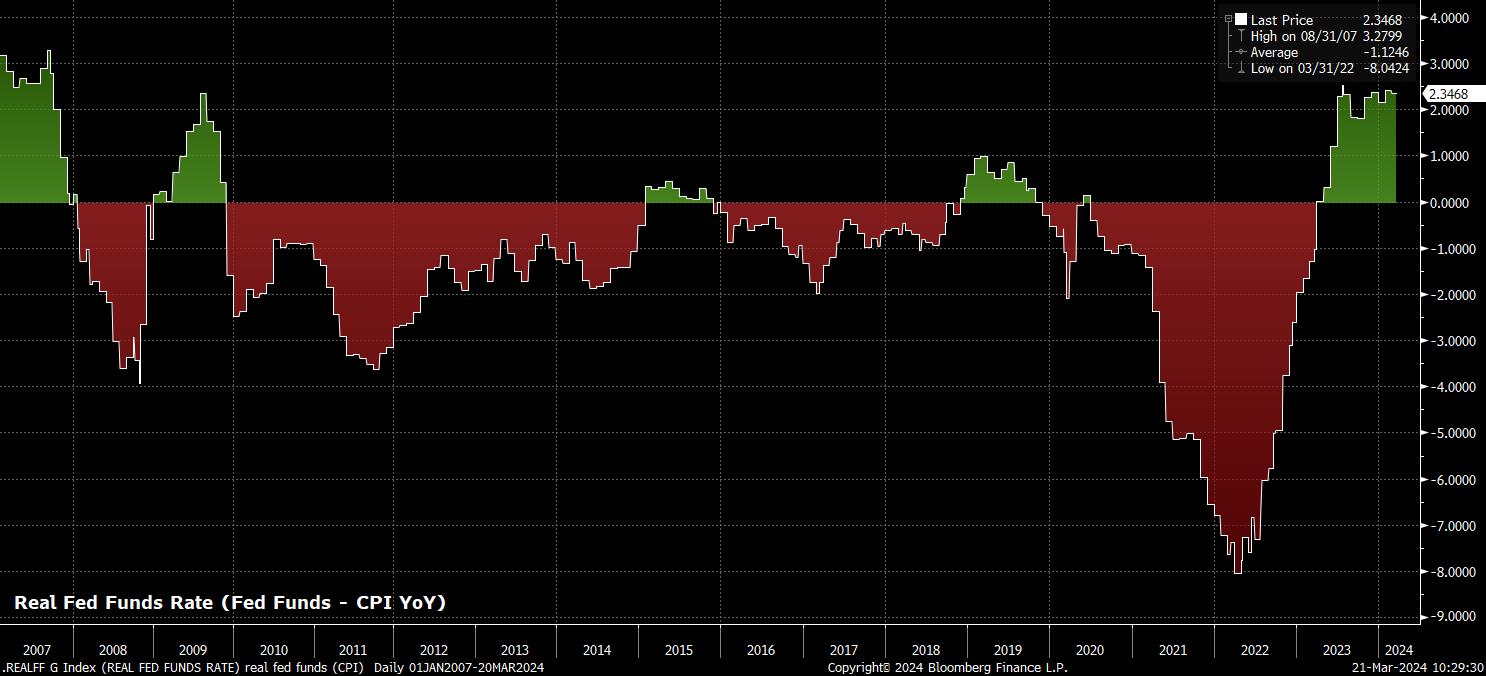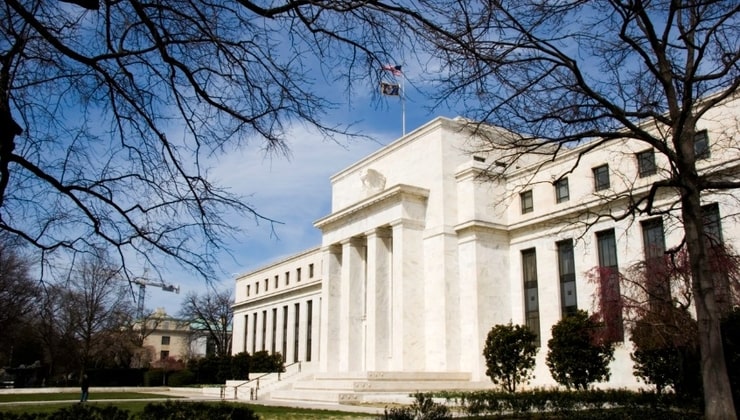Yes, on the FOMC, folk will excite themselves about the modest upward revision to the inflation projections, and the subsequent marginally higher dots in 2025, 2026, and the longer-run fed funds rate estimate. Even if, as is well known at this point, the dots, beyond the current year, are notoriously unreliable in projecting the rate path, with even FOMC officials themselves discounting the utility of the dots as a forecasting tool.
But, overall, one must ask the question, has anything significantly shifted in terms of the FOMC outlook?
The answer there is, to be frank, a resounding no.
Will the Fed still cut this year? Yes, of course, with the dot plot median still pointing to 75bp of easing in 2024, and the nominal fed funds rate having to be reduced as inflation continues to recede, in order to avoid a mechanical – and undesirable – tightening in monetary policy late in the cycle, which would risk choking economic growth, and throwing into doubt the ‘soft landing’ that the economy currently looks set for.

Will the Fed still bring QT to an end this year? Yes; discussions over the appropriate balance sheet policy took place at this meeting, and should be elaborated upon in the minutes due in a few weeks. A QT taper at the June meeting, with the process to conclude by the end of the year, still seems reasonable.
Are the FOMC still flexible? Yes, with inflation heading back towards the 2% target, the Fed have earnt the right to bring the ‘put’ back to the table – if the labour market were to drastically weaken, growth roll-over, or a financial accident to occur, the Committee can and will ease policy if necessary, either via rate cuts, or via targeted liquidity injections to sectors that may be most adversely affected.
All this combined leaves markets, basically, where they were before the March statement/SEP/presser dropped. With the ‘Fed put’ back, alive, well, and even more flexible than it was before, market participants should continue to have confidence in increasing their risk exposure, knowing that policymakers once more ‘have their backs’.
Of course, that’s not to say that risks do not remain. Geopolitics is one; sticky inflation another; and, continued hot earnings growth another.
It is also not to say that a drawdown, or pullback, in equities is not impossible. The 50-day moving average in the S&P 500 sits around 5% below the index’s current level, and seems a logical level to hold in the event of any move lower.

It is, however, to say, that the path of least resistance should continue to lead higher for risk assets, with dips remaining relatively shallow. Although risk remains, the easier policy backdrop – not just from the FOMC, but also from G10 peers – should continue, to a significant degree, insulate stocks from the fluid geopolitical backdrop, and keep a lid on equity vol.
FX and rates vol, however, should continue to tick higher, particularly after the SNB became the first G10 central bank to cut this cycle, evidencing how easing cycles across G10 will take place at a differing pace, and to differing magnitudes, providing renewed policy divergence, and thereby trading opportunity, within the FX space.
Related articles
Pepperstone不代表這裡提供的材料是準確、及時或完整的,因此不應依賴於此。這些資訊,無論來自第三方與否,不應被視為建議;或者買賣的提議;或者購買或出售任何證券、金融產品或工具的招攬;或參與任何特定的交易策略。它不考慮讀者的財務狀況或投資目標。我們建議閱讀此內容的讀者尋求自己的建議。未經Pepperstone的批准,不允許複製或重新分發此信息。


